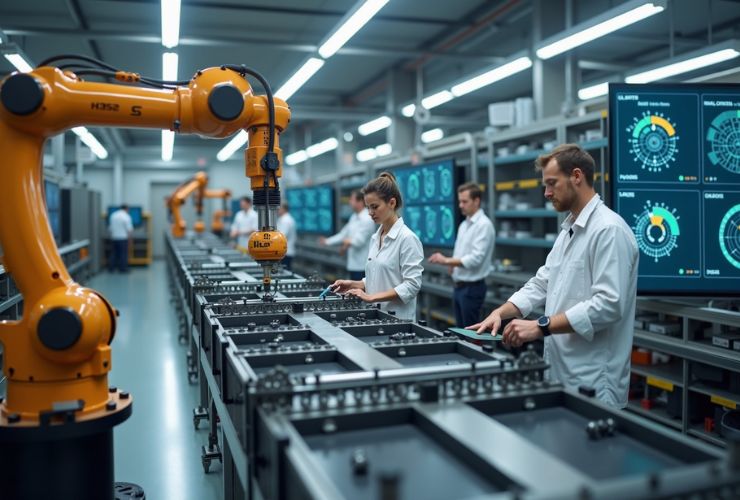
Smart manufacturing is revolutionizing the industrial world, fusing the latest advancements in robotics, artificial intelligence (AI), and automation to create factories that are more efficient, adaptive, and intelligent. As industries race toward digital transformation, smart manufacturing stands out as a crucial trend shaping the production landscape for 2025 and beyond. According to a recent McKinsey report, these innovations are reshaping factories for the future.
What Is Smart Manufacturing?
Smart manufacturing integrates AI-powered robotics, advanced sensor networks, big data analytics, and cloud-connected systems to automate and optimize every aspect of factory operations. Unlike traditional manufacturing, which relies heavily on repetitive manual labor and rigid processes, smart manufacturing uses data and connectivity to enable real-time decision-making and adaptive production lines.
Key Features of Smart Manufacturing
- AI-Driven Robotics: Robots equipped with AI learn new tasks, adapt to changes in the environment, and collaborate safely alongside humans on the factory floor. This results in increased productivity and reduced errors.
- Industrial Internet of Things (IIoT): Machines, robots, and sensors are interconnected, sharing data instantly to identify maintenance needs or bottlenecks before they hinder production.
- Advanced Automation: Automated systems handle everything from raw material intake to packaging, making operations faster and scaling manufacturing to meet dynamic market demands.
- Predictive Maintenance: By analyzing machine data in real time, smart systems can predict and prevent breakdowns, saving costs and avoiding downtime.
- Data-Driven Insights: Massive volumes of data collected from manufacturing processes are analyzed using machine learning to uncover new efficiencies, improve quality, and optimize resource use.
Benefits of Smart Manufacturing
- Increased Productivity: AI robotics works 24/7 with high precision, leading to faster turnaround and higher product quality.
- Reduced Costs: Automation lowers labor costs and minimizes the risk of human error or workplace injury.
- Greater Flexibility: Manufacturing lines adapt quickly to changes in product design or consumer demand, supporting mass customization and rapid prototyping.
- Sustainability: Data analytics optimize energy use and raw material consumption, promoting green manufacturing practices.
- Enhanced Competitiveness: Early adopters of smart manufacturing gain an edge in product innovation, speed to market, and customer satisfaction.
Real-World Applications
- Automotive factories now use AI-driven robots for assembly, welding, and painting, drastically reducing production times.
- Consumer electronics plants leverage automation to maintain quality and flexibility across ever-changing device models.
- Pharmaceutical manufacturers employ real-time analytics and robotic systems to ensure product purity and regulatory compliance.
Smart Manufacturing and Google AI Mode SEO Tips
To maximize online visibility—particularly for Google AI Mode and Google Discover—ensure your blog post follows these optimization tips:
- Incorporate key terms throughout: smart manufacturing, robotics, advanced automation, AI-powered robots, Industry 4.0, predictive maintenance.
- Write clear and concise headings that align with user search intent.
- Answer specific “what,” “how,” and “why” questions about smart manufacturing to match AI-generated query patterns.
- Structure content with bullet points, FAQs, and summary boxes for skimmability.
- Reference the latest news, data, and case studies to demonstrate up-to-date expertise.
- Include schema markup (such as FAQ and HowTo) for enhanced search result features.
What industries are using smart manufacturing?
Automotive, aerospace, electronics, pharmaceuticals, food processing, and textiles are among the sectors leading the adoption of smart manufacturing.
How does AI improve manufacturing efficiency?
AI optimizes inventory, automates repetitive tasks, predicts equipment failures, and adapts to changing production demands in real time.
Is smart manufacturing sustainable?
Yes, smart practices significantly reduce waste and energy consumption, helping factories meet green goals and comply with regulations.
Smart manufacturing, powered by robotics and advanced automation, is not just an industrial trend—it’s the foundation for future-ready factories. Brands embracing these innovations are positioned to lead in productivity, resilience, and sustainability going forward.